Enjoy this post from guest author Rachel Sandler!
(A quick note from the author: for the following article, I’m using solely the information given to us by the Marvel Cinematic Universe, not all of Marvel. Why? Five movies are already highly contradictory. Hundreds of comic books would be truly impossible to reconcile.)
The Marvel Cinematic Universe contains several fascinating elements. One of the best known is vibranium, which makes up Captain America’s iconic shield. What is vibranium and is there any sort of scientific basis for it?
We first encounter vibranium in the 2011 movie Captain America: The First Avenger. Way back in 1942, Howard Stark provides Steve Rogers (aka Captain America) with a prototype shield made of vibranium. Stark describes the metal as “stronger than steel and a third the weight,” adding that “it’s completely vibration absorbent.”
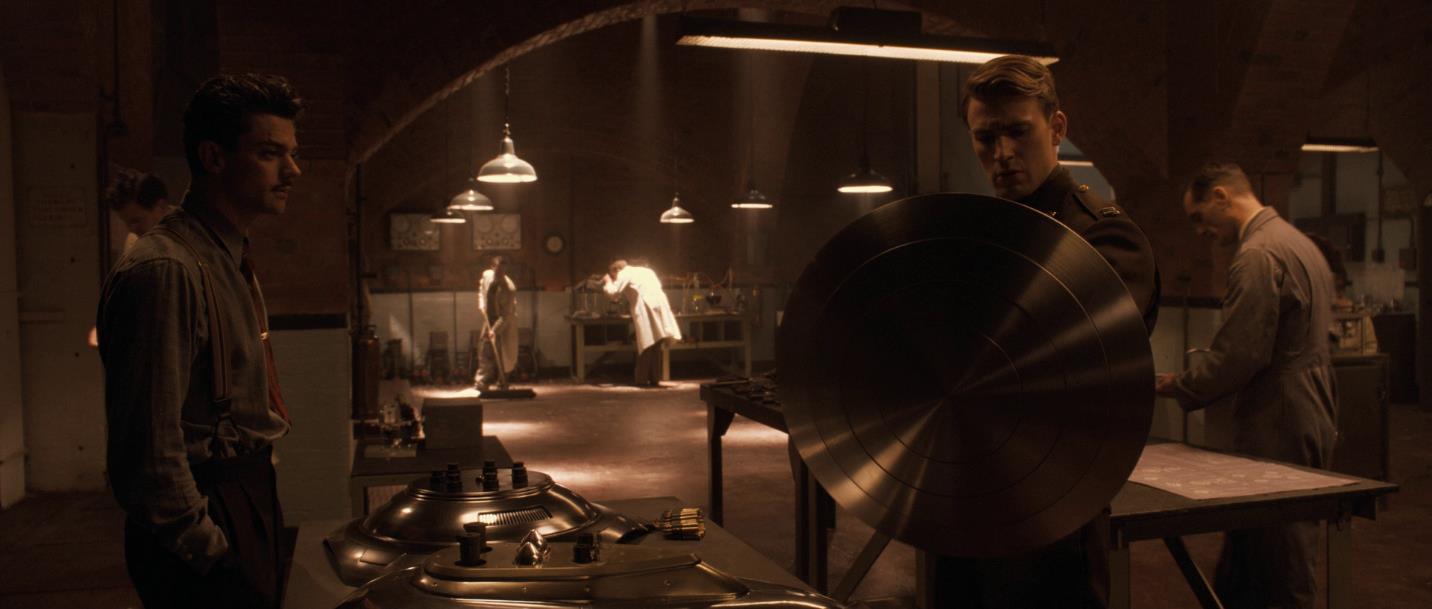
Steve Rogers first encounters his vibranium shield, picture from the Marvel Cinematic Universe Wiki
This last point seems to be quickly confirmed as Agent Peggy Carter walks in and fires a gun at Rogers. The bullets hit the shield, crumple, and fall to the ground rather than ricocheting. As a nice touch, observant audience members may notice that the bullets make no noise as they hit the shield, showing that the metal absorbs the sound vibrations as well as the kinetic energy from the bullets. Or perhaps the sound effects crew just forgot to add that in. Let’s assume the former.
Unfortunately, this appears to be the only instance of vibranium absorbing vibrations the way Howard Stark claims. Throughout the next four movies featuring Rogers, we encounter one example after another of vibranium not only failing to absorb energy, but reflecting it quite strongly. The first (and most dramatic) instance is near the beginning of the 2012 movie The Avengers. Thor puts all of his strength into a strike with Mjølnir at the center of the shield, the result of which is a shock wave of light and sound which flattens all of the trees in a forest for a radius of several hundred feet.
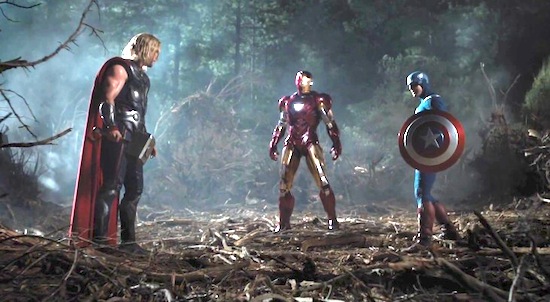
The aftermath of the contact between Mjølnir and vibranium, picture from Forbes
Were this the only example of vibration reflection, it could perhaps be chalked up to the strange properties of Mjølnir, which we mere mortals can’t quite comprehend. However, there are far more banal cases. In the beginning of the 2014 movie Captain America: Winter Soldier, for example, Rogers takes out a guard during the ship fight scene by holding his shield against the guard’s face and punching it. Not only does the energy of the punch travel through the shield to knock down the guard, the shield rings like a gong – definitely not an example of vibration absorption.

Actually, if we think about it closely, the fact that Rogers uses his shield as a weapon in itself means that it doesn’t do a particularly good job of absorbing energy. If it did, those melee attacks would be far less effective and the shield certainly wouldn’t bounce off of targets and back into Rogers’s hand – especially not at the impossible angles seen in the films (“That thing doesn’t obey the laws of physics at all!”).
So what can we actually say about vibranium and its properties? Well it is certainly true that for high energy impacts, vibrations are not transmitted through the shield. With that, Rogers wasn’t crushed under the blow from Mjølnir or swayed back by the impact of Agent Carter’s bullets. For low energy impacts, though, such as Rogers punching his own shield to knock out the guard, the vibrations were transmitted all the way through.
There are a couple of directions we can take this and remain in the realm of real science. The first is non-Newtonian fluid, such as oobleck (that cornstarch and water mixture you may have played with as a kid). Non-Newtonian fluids are liquid under gentle pressure, but solidify when hit more forcefully. Given that the shield is always solid and not a thick goo running down Rogers’s arm, it’s probably safe to cross this possibility off. And while non-Newtonian foams do exist, they wouldn’t be stiff enough for use as a blunt force weapon. There’s a second, more promising theory, though: vibranium is an alloy containing carbon nanotubes.
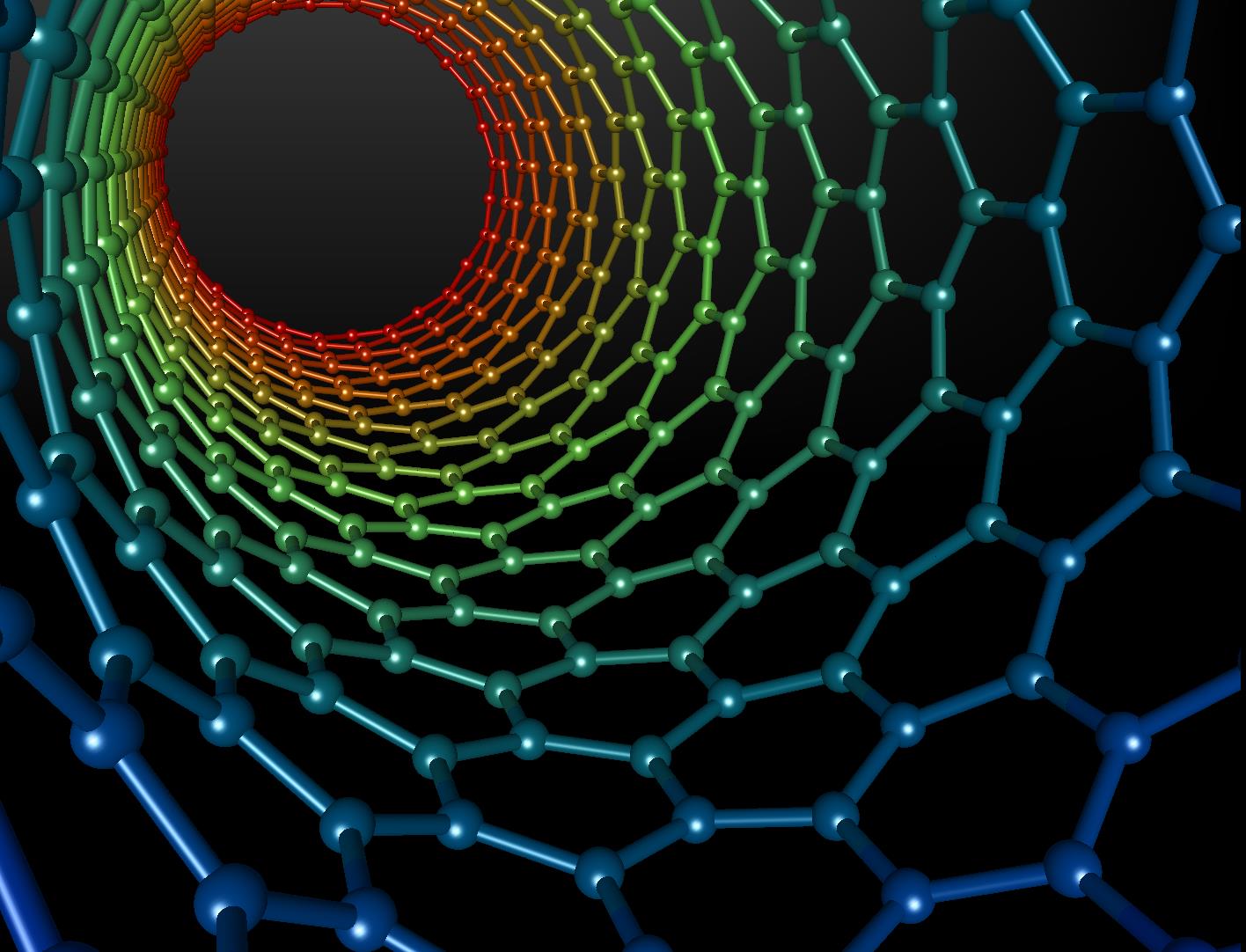
Simulation of a carbon nanotube as seen from the inside, picture from Wikipedia
Carbon nanotubes were first noted in a Soviet scientific journal in 1952, when two Russian scientists showed pictured of graphite tubes only 50 nanometers in diameter. It’s surprising, then, that we’re really only now beginning to understand the various applications for these versatile strands.
The first property of carbon nanotubes we can relate to vibranium is their ability to absorb and store energy. In 2005, a lab in South Carolina published an article detailing the incredible job nanotubes do at “passive vibration damping.” Passive damping means the material is inert and requires no instrumentation to activate it upon measuring vibrations. Almost six years later, a group at Virginia Tech began adding carbon nanotubes to fiberglass to improve the damping of kinetic energy. The very next year, a lab in Australia announced they had used carbon nanotube-infused silicon to dampen vibrations specifically caused by audio waves.
So we appear to have a basis for Stark’s assertion that vibranium is “vibration absorbent.” What about the fact that it’s “stronger than steel and one-third the weight?” Carbon nanotubes are certainly stronger than steel. The steel regularly used in construction has an ultimate tensile strength between 60,000 and 80,000 psi, depending on the exact composition. Carbon nanotubes, on the other hand, have an ultimate tensile strength that’s difficult to measure because it’s so high. The most direct measurement thus far puts it at approximately 20,000,000 psi. Yep, definitely stronger than steel. Carbon nanotubes are lighter, as well, with a density that’s about 95% that of solid steel. That’s nowhere near the one-third mark, but we don’t actually know what the other components of the alloy are. A combination with a metal lighter than iron could help us hit that checkpoint. Let’s not dwell too hard on the specifics there, anyway, as Howard Stark gave us that number in the same lying breath as “completely vibration absorbent.” The fact of the matter is that a carbon nanotube alloy would be stronger and lighter than steel, while simultaneously damping vibrations. In reality, these three specifications have already made carbon nanotubes an attractive material for making body armor which protects the wearer from both the physical bullets and the staggering force behind them.
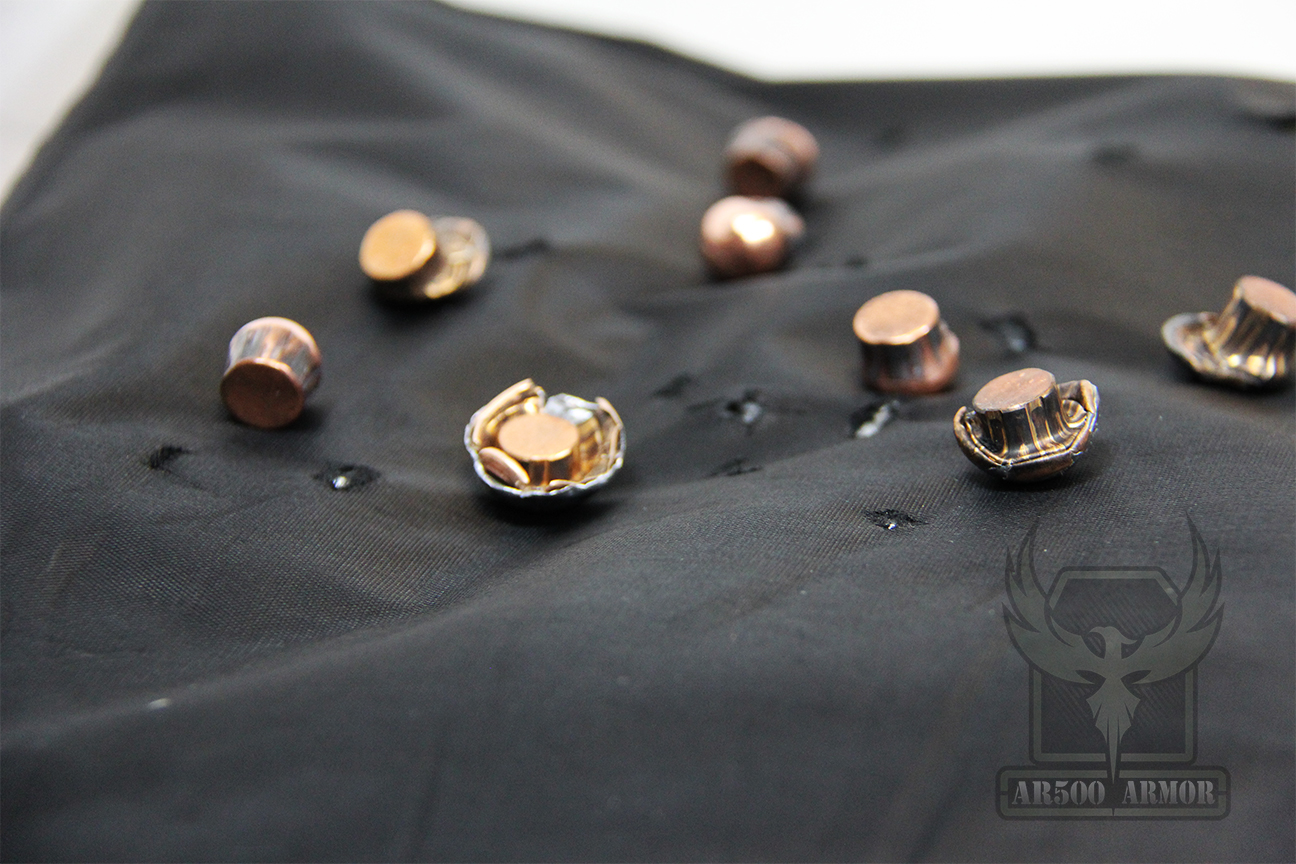
Bullets on carbon nanotube armor, picture from Ballistic Armor Defense
Well, that seems to take care of what vibranium should do, but what about the other properties we actually see on a regular basis throughout the movies? Could the material bounce off of enemies and objects? Could it hold a sharp enough edge for use as a weapon? Could it occur naturally to be dug out of the ground in Wakanda? The answer to the first question appears to be yes. Carbon nanotubes are fairly elastic (part of why they stop bullets so well) and have been used to make springs, and thus are elastic enough to allow for bounce. The shape of the material will matter as much as the material itself in this case, though. When molded into the Frisbee-like shield seen in the films, the material should be able to easily ricochet off of objects…although I’m not going to comment on the angles. Some things you just have to attribute to Hollywood.
The other two questions, it turns out, are even more promising. Carbon nanotubes have been used to make sharp edged weapons since the eighth century. Damascus steel, a material used in the Near East to make swords and knives, was discovered in 2006 to contain carbon nanotubes. These nanotubes, of course, must have been naturally occurring and gave the swords a strength and sharpness unsurpassed by any similar technology. While alloys are not hugely common in nature, they do exist – for example, electrum is a natural alloy of silver and gold. It is not outside the realm of possibility that a natural alloy of carbon nanotubes and another metal could be found – rarely – on Earth.
While Howard Stark’s original description of vibranium may have been a bit…wrong…overall the properties of the material can in fact be reconciled into a single, nice explanation. And an exciting one at that – while it’s unlikely we’ll ever find vibranium in our reality, the ability to manufacture it may not be too far off. And as a final remark, carbon nanotubes are known colloquially by another name: buckytubes. Coincidence? I think not.
Rachel Sandler is working towards her PhD in Nuclear Physics at Michigan State University. She hopes that at some point in her life she will no longer be a student.
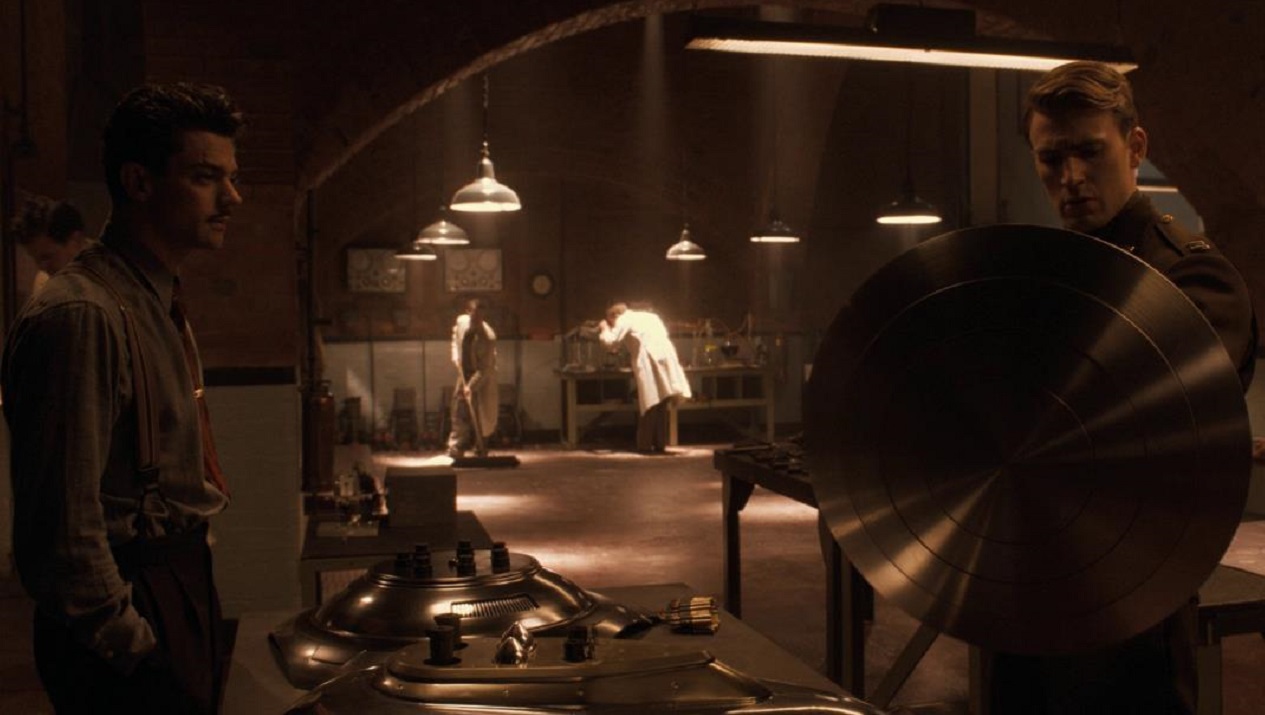
So next up is to explain the difference between Vibranium and Adamantium, another fictitious alloy with amazing and contradictory properties.
That’s my plan. Adamantium is harder, though — materials science isn’t my specialty. I’d also like to spend some time thinking about how conservation of energy applies (or doesn’t apply) to Uru.
This is an absolutely fantastic Overthinking Research Agenda.
It is interesting to me that all of these examples are from the Marvel universe (correct me if I’m wrong, I’m not super duper familiar with comics). Are there any interesting elements/materials in the DC universe? Kryptonite? Or do they incorporate those kinds of elements less frequently in their world-building?
There’s also inertron and the Nth Metal…probably others, but I didn’t follow DC as much as I did Marvel growing up so I don’t know for sure.
Something I’ve been wondering about with Nth Metal specifically but also with “psychic” materials in general is how that interface with the brain would work biologically and also how it could be invisible to the naked eye.
Recently I was watching a video on quorum sensing in viruses and started to wonder if this could be used in a similar way to telekinetic phenomenon. You’d still have the obvious problem of how inertia is generated out of absolutely nowhere but it seems like it could at least solve the issue of how an object outside of the body is being interacted with seemingly by force of will alone.
Then again, I have zero idea how reliable that could be or how quickly receptors can receive the appropriate signaling molecules or even how long it would take for cells inside of the body to travel to outside of the body. Could this actually be targeted? There are bacteria that respond to magnetic fields so… maybe? It all seems very specific, though. Like it would only work in a controlled environment.
What is Vibranium’s density.
Vibranium is a new pure element as described in Iron man 2. It is not an allotrope of carbon or anything like that.
(Who doesn’t love a 5 years belated devils advicit :)